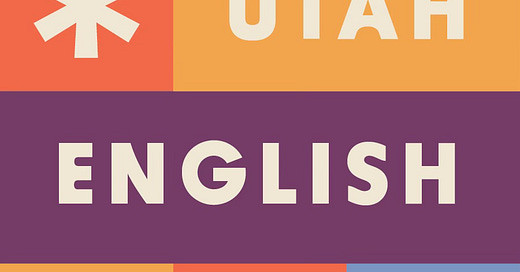Language is the most massive and inclusive art we know, a mountainous and anonymous work of unconscious generations.
– Edward Sapir
As a graduate of Brigham Young University’s linguistics program, I know at least a few things about Utah English. Several of my former professors have published papers on others’ perceptions of the dialect as well as its actual characteristics, and Utah English came up frequently during classes and was something of a touchpoint. My classmates and I knew—almost instinctively—that although we were being taught to train a critical eye on human language generally (linguistics is essentially the science of language), there was much about the speech of Utahns (and by extension, Mormons1) specifically that merited scholarly attention. And our professors knew this too. For instance, in the day or two following general conference weekend, they would often open the floor at the beginning of lecture to anyone who wanted to share a linguistic insight gleaned from listening to that many Latter-day Saints speak in a row from the Conference Center pulpit.
So it came as no surprise when I learned that David Eddington, a retired BYU linguistics professor, had published an entire book on the subject of Utah English (Utah English, University of Utah Press, 2023). Eddington’s book, while intended for a general audience, is essentially a play-by-play review of the findings of his Utah English survey, which he conducted online in 2020. In its specificity and granular detail, then, the book reads like it is written for specialists. However, Eddington’s prose is accessible and he generally explains all relevant technical concepts that non-linguists wouldn’t understand. Nonetheless, I would not recommend that anyone without a very serious interest in the subject sit down and read this book page-by-page. (I’ll admit that even I, someone with a background in linguistics, skimmed large portions of it.)
One of the more interesting stories about Utah English that Eddington shares in the book is one that I’d heard before in a class at BYU. In 2008, a robber walked into a Salt Lake City cafe, handed the cashier a bag, and told the cashier to fill it. The cashier complied with his demand—as he’d heard it—by reaching out and feeling the bag. Frustrated, the robber replied “You’ve got to be kidding,” and left. As Eddington writes, “the would-be hold-up was thwarted by what linguists call the fill/feel merger.” (I was also told that President Dallin H. Oaks clipped a story about this failed robbery from the paper and mailed it to his son, who is a linguistics professor at BYU.)
Ultimately, my principal take-away from Eddington’s book was in some ways just a confirmation of an earlier intuition: Utah English is not one easily defined list of things that all Utahns do when they talk, and ts characteristics (i.e., what is truly a Utah-specific language feature as opposed to those features that have been erroneously or stereotypically attributed to Utahns) are in fact quite hard to pin down. As Eddington puts it, “dialectal characteristics rarely coincide with political boundaries . . . In fact, the theme that runs throughout [this] book is not one of monolithic unity of speech in the state but of social and geographic diversity.” This is not to say that we shouldn’t try to characterize speech across geographic, social, or religious dimensions. Eddington and the other linguists like him spend their careers doing exactly this. What Eddington is showing us through his much-needed—if somewhat dense—exploration of Utah English is that we would do well to cast a gentler and more careful eye the next time we’re tempted to make sweeping generalizations about how members of a certain social, ethnic, religious or other group may speak, based only on our own (almost always very limited and contingent) exposure to their speech.
The relationship between Utah English and Mormonism is at once simple (Utah was settled by Mormons and there are still lots of them living in the state today) and rather complicated (evidence suggests that the relationship between religious affiliation and speech isn’t always so straightforward and the influence of Mormonism on speech obviously extends beyond Utah). Eddington made the somewhat curious choice to refer to the Church of Jesus Christ of Latter-day Saints throughout his book by an acronym almost as unwieldy as the name it abbreviates: CJCLDS. This is not one that I’d encountered before, nor is it one that I would recommend others use.





Love it - great piece for the Utah Monthly: interesting, well-done, no controversy!